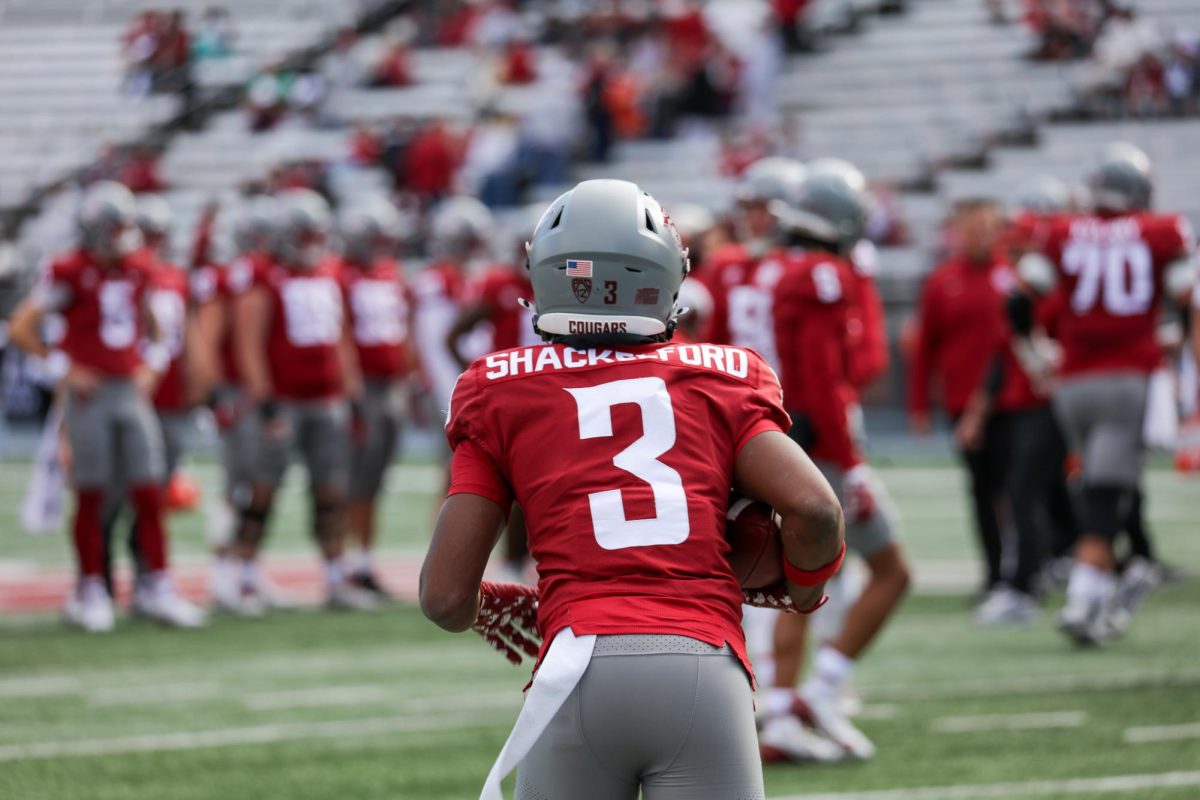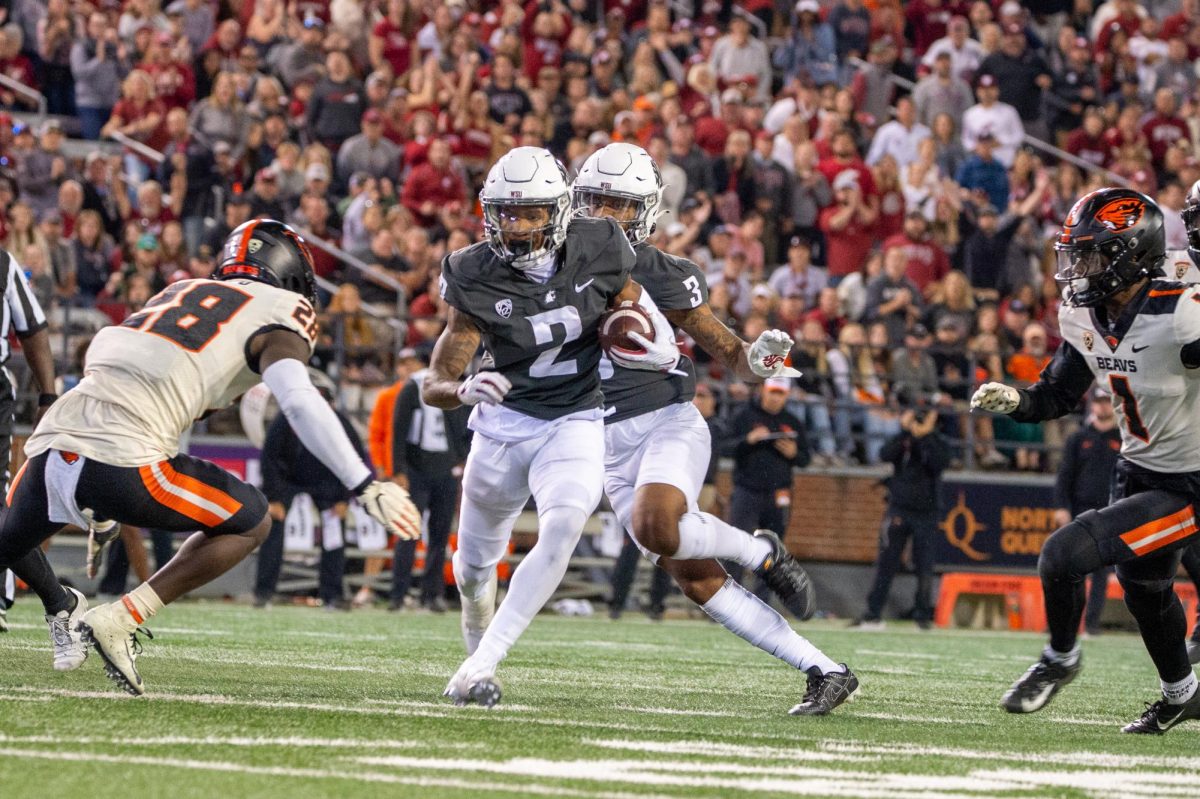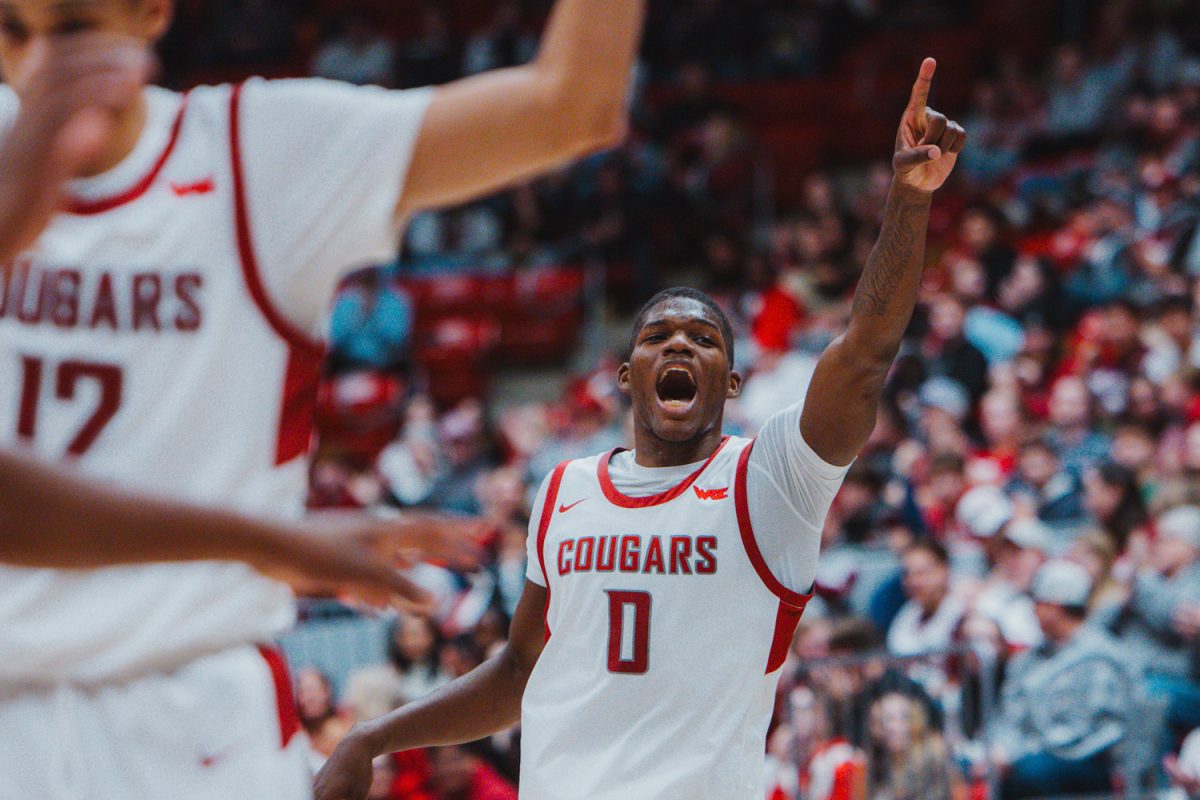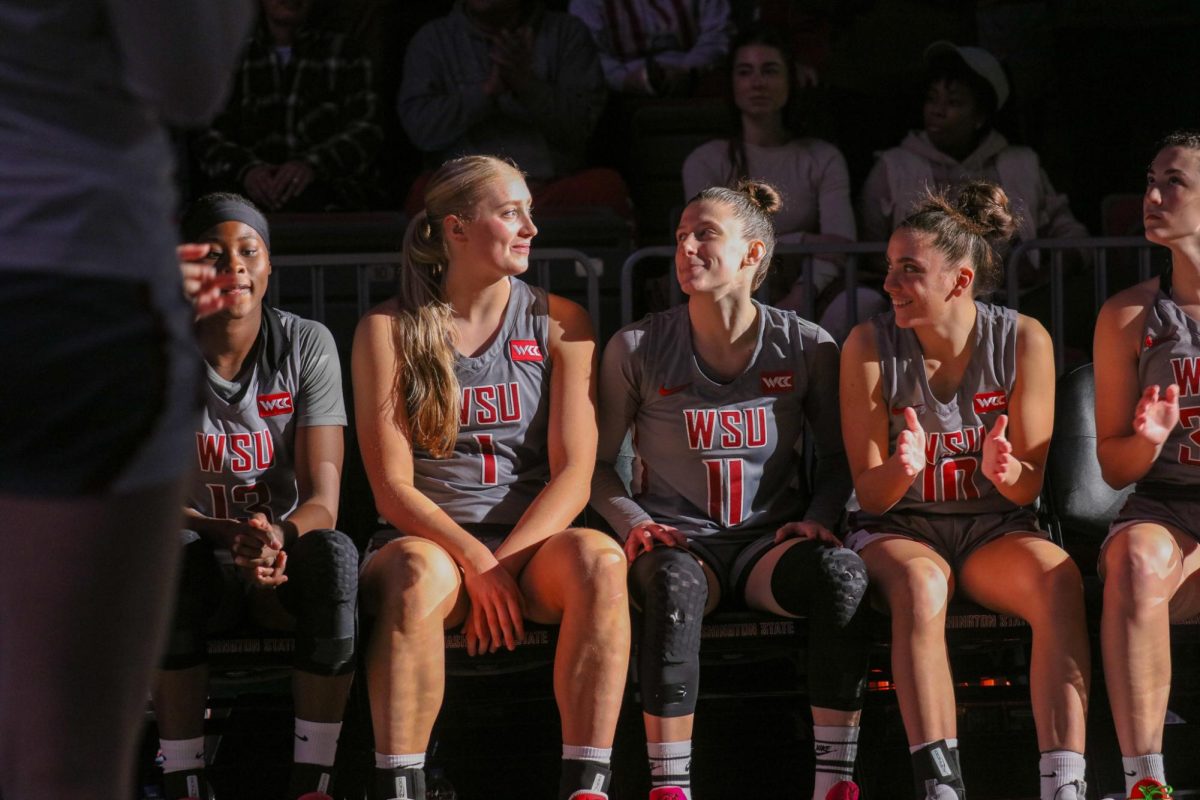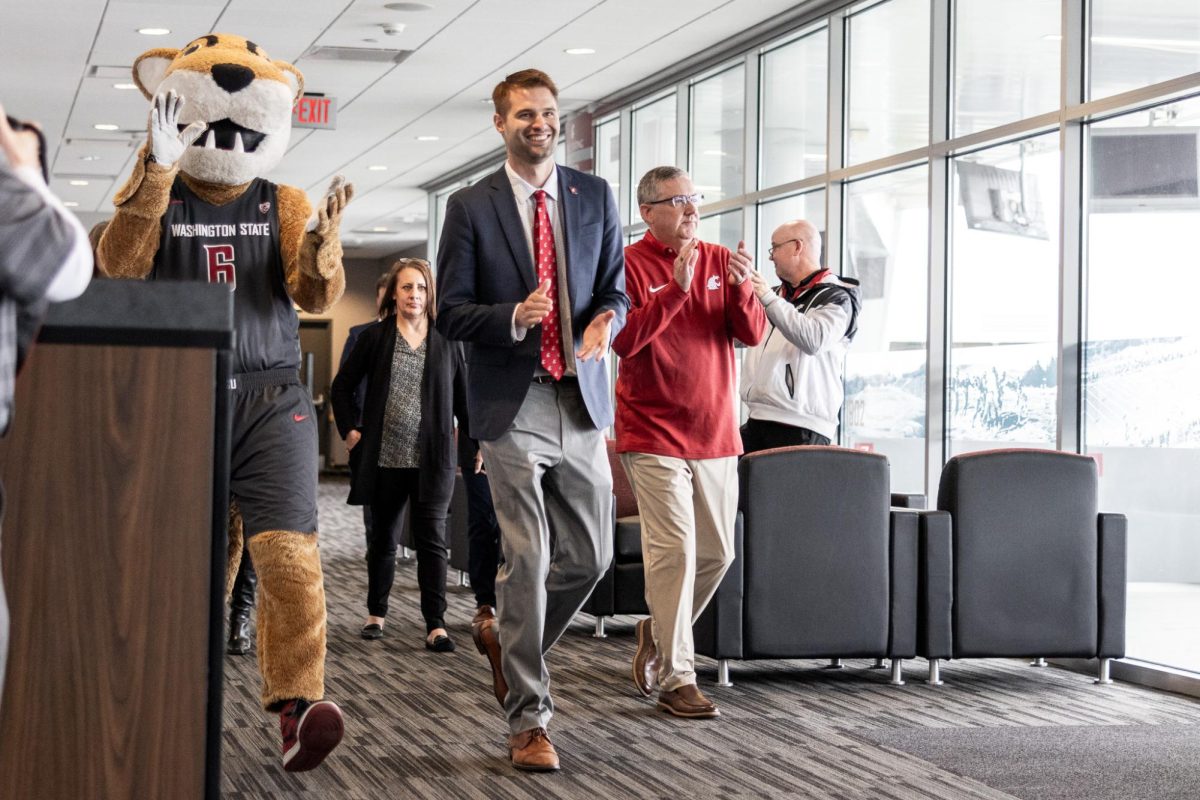On Saturday afternoon, WSU football announced South Dakota State’s Jimmy Rogers as its new head coach. The hiring comes just 11 days after former coach Jake Dickert left to become the new head coach at Wake Forest.
WSU now turns to a new era of football and looks to continue to rebuild the rest of its staff and roster after losing seven coaches, 11 starters and 26 total scholarship players.
Rogers comes with a strong recent track record of success but also some major uncertainty given his age and lack of experience. He led the Jackrabbits to an FCS national championship last season and an FCS semifinals appearance this season. Rogers went 27-3 during his two seasons at SDSU and his defenses ranked first and fifth respectively in total defense. The former Jackrabbits coach and standout linebacker is a defensive-minded coach with experience as a linebackers coach and defensive coordinator, consistently leading SDSU to top ten finishes on defense.
Despite having coached at SDSU since 2013, Rogers has only been a head coach for two seasons and is just 37 years old. While the results he has produced speak for themselves, the level of play even between the Power 5 FBS schools and the FCS presents a completely new set of challenges for Rogers. The former FCS champion is reminiscent of former WSU offensive coordinator Ben Arbuckle, a bright mind on the rise in coaching circles coming from the lower levels of college football. WSU will need Rogers to continue on the uptrend and adapt to FBS football if it hopes to rebuild its quickly deconstructed football program.
One major benefit of hiring Rogers and bringing him in now is the potential for him to bring help with him. Rogers has yet to name his staff and the team has given him a blank slate due to losing its offensive and defensive coordinators and the running backs coach. Building a strong and experienced coaching staff around himself is likely the best way for the coach to support himself in his transition from the FCS to the FBS.
Rogers could potentially bring co-offensive coordinators Ryan Olson and Danny Freund with him if neither of them are promoted to the head spot at SDSU. Olson could be especially appealing for Rogers because of his work with the Jackrabbits’s offensive line, which helped produce back-to-back top five finishes in rushing yards and allowed the fewest sacks per game this season in the FCS. The offensive line was an area of weakness for Wazzu in 2024 as quarterback John Mateer often had to improvise to produce on the ground and no rusher cracked 1,000 yards on the season.
Several big names at important positions could follow Rogers to the Palouse as well. SDSU starting quarterback Mark Bronowski recently entered the transfer portal but is weighing all options according to ESPN, including a potential entry into the 2025 NFL Draft. Bronowski threw for over 10,000 yards in his career and earned consecutive FCS championships in 2022 and 2023, including three years as a starter for the Jackrabbits. Bronowksi is now one of the top names left in the portal along with the former UNLV and Wisconsin starters as Power 4 schools quickly swept up the top quarterback names. Star receiver Griffin Wilde announced that he was transferring as well in the hours after his coach’s decision to leave for Wazzu, signaling a potential move to Pullman for Wilde.
While there was a report that Wilde had committed to Louisville, that report has since been confirmed to be inaccurate, and Washington State is apparently in the mix.
Another name to keep an eye on is edge rusher commit Owen Ostroski, who was set to transfer from Tulsa to SDSU before the Rogers announcement. WSU could offer a change of scenery for the talented defensive linemen who recored 8.5 sacks and 22 tackles for loss in a season in which Tulsa football underwhelmed going 3-9 and 1-7 in conference play. Ostroski could replace defensive tackle Khalil Laufau and linebacker Taariq Al-Uqdah, who both transferred to other Power 4 schools.
While rebuilding this WSU roster will be no easy task, Rogers has options. Along with potentially bringing along familiar faces from SDSU, the new Coug coach could possibly present a steadying presence for current Cougs and other potential Group of Five targets in the portal. Wide receiver Tre Shackelford already announced his withdrawal from the portal and more names could follow suit. The interim head coach during the bowl game, defensive tackles and assistant head coach Pete Kaligis, would also be a viable option for defensive coordinator. It is reasonable to expect Rogers to handle the defensive playcalling, but having a strong voice of reason and passionate coach advising him could help power an improved defensive unit next season.
Wazzu is in a transition period, and that is putting it lightly. All signs are pointing to a new era for a Cougar football and fans are likely going to have to trust the process and let the team grow. The program reportedly focused its search on successful FCS coaches and Rogers’ annual salary is arguably much lower than expected, ranking the second lowest amongst coaches in the new future Pac-12. Rogers’ salary is about $1 million less than Dickert’s $2.7 million yearly earnings when he was at WSU. The team has also yet to add any significant transfer pieces with no clear indication of an NIL pool that could draw any Power 4 names. Without the revenue from a media deal and the stability of a well-managed conference, Wazzu sits in a tough position to meaningfully upgrade its personnel.
Rogers brings potential to the Palouse, whether it be with his recent success, rebuilding the roster with his former players or developing slowly over several seasons. Right now, the important thing for Rogers and the program is to settle in and build gradually from the ground up. Cougar football is still in a tumultuous time, but Rogers provides a sense of hope and a vision for the team to form an identity. Significant shifts should not be expected, but smart, underrated coaching hires and under-the-radar portal moves can be in the fight to bring glory back to the Palouse.



